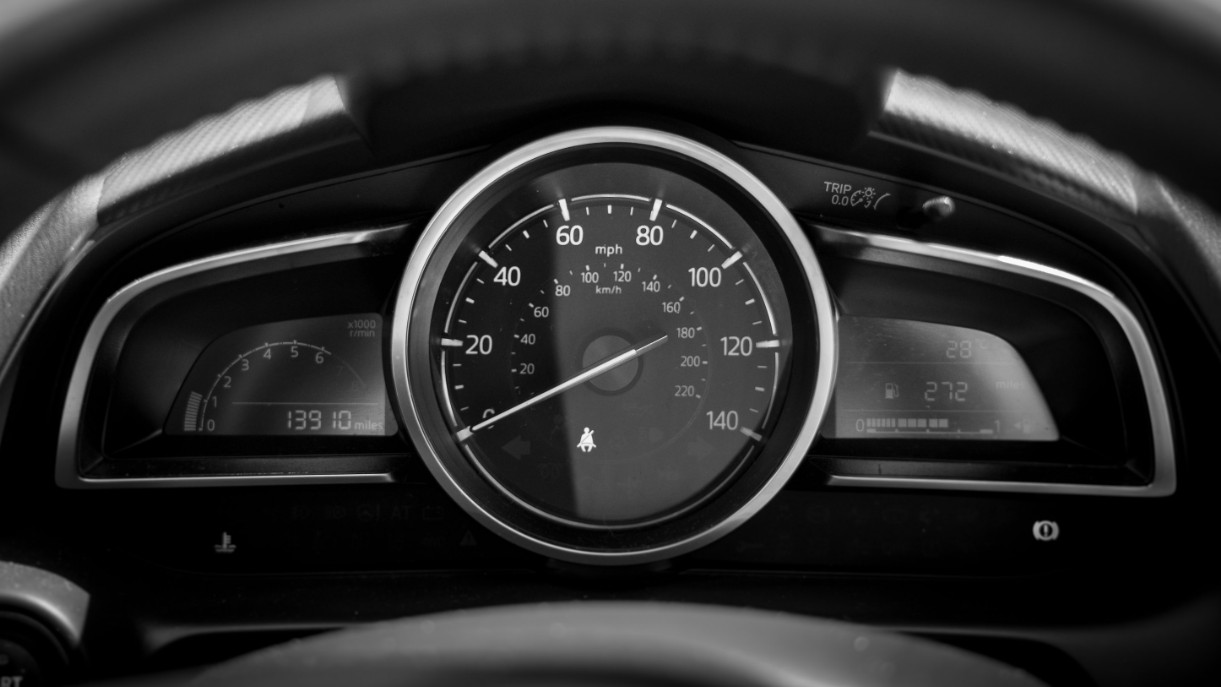Are you using a private vehicle for business travel? As long as you’re making a journey in your own vehicle, and it’s for business that’s outside your usual commute, you can claim a ‘mileage allowance’ to reimburse you for the money you’ve spent on petrol and travel etc. Sounds like good news, but how do you claim this mileage allowance?
What’s the process? What counts as ‘business mileage’? And how much can you claim back to cover the expenses you’ve incurred on your journey?
In this blog post, we’ll cover:
- What is mileage allowance?
- What journeys are classified as business trips?
- What are the approved mileage allowance payment (AMAP) rates?
- Company cars and using the advisory fuel rate
- Specific rules to consider
- Claiming more than the ‘approved’ allowance
- Claiming less than the ‘approved’ allowance
- Claiming tax relief
- What records do you need to keep?
- Taking the hassle out of mileage claims
What is mileage allowance?
As an employee, there will be occasions where you have to travel somewhere as part of your work. You might be driving to see a new client at their offices, or going to a conference at a different location to your usual workplace. Essentially, you’re making a journey that has a business purpose. And if that’s the case then you can claim mileage allowance for the trip, as long as you’re using your own vehicle. This could be your personal car, van, motorbike or even your bicycle – we’ll talk about using a company car shortly.
Mileage allowance pays you back a certain amount of your expenses, to cover costs like fuel, road tax, MOTs, repairs and even the cost of electricity when driving an electric vehicle.
To claim your mileage allowance, you must:
- Record your mileage and the details of the trip
- Submit a claim to your employer
- Wait for your employer to approve and pay your mileage allowance payment
What journeys are classified as business trips?
So, we know that you can claim mileage allowance for business trips, but what actually counts as ‘business purposes’ according to HMRC?
In a nutshell, you can claim for any trip that’s outside your usual journey to work. The day-to-day route from your house to your workplace is classed as your regular commute and isn’t seen as a business trip.
What you CAN claim for are journeys that have a business purpose, but that require you travelling to a location that isn’t your usual workplace or home.
So, for example, this may mean driving to:
- An office location that isn’t your usual base
- A customer’s workplace for a meeting
- An event, such as a work-related conference or seminar
- A training centre for a mandatory training course
- A temporary office if your usual workplace is out of action

What are the approved mileage allowance payment (AMAP) rates?
The payments you receive to cover your mileage costs are called Approved Mileage Allowance Payments (AMAP) and they’re paid at two standard rates – one rate for the first 10,000 miles travelled, and a second rate for any mileage over and above 10,000 miles.
The current AMAP rates are:
| Type of vehicle | First 10,000 miles | Above 10,000 miles |
|---|---|---|
| Cars and vans | 45p | 25p |
| Motorcycles | 24p | 24p |
| Bicycles | 20p | 20p |
You can quickly calculate the approved amount for a car journey by breaking your total mileage down into the first 10,000 miles and any mileage above this, then multiplying the two resulting numbers by the 45p and 25p rate.
Example:
Hassan is an employee. He regularly uses his own car for business purposes and in the 2020/21 tax year clocks up 16,427 business miles. Hassan’s approved amount is £6,106.75, calculated as follows:
(10,000 miles @ 45p per mile) + (6,427 miles @ 25p per mile)
Company cars and using the advisory fuel rate
To be eligible for mileage allowance under the AMAP rules, you must be using your own personal vehicle; e.g. a car, van, bicycle or motorbike. But what happens if you’re driving a company car for your business mileage?
As a company-car driver, you can use HMRC’s Advisory Fuel Rates, sometimes also called ‘HMRC company car mileage rates’. The Advisory Fuel Rates are the company car equivalent of the AMAP rates for private vehicles and they’re the recommended reimbursement rates if you want to reclaim business travel expenses when driving a company vehicle.
You can find details of the specific rates, based on engine size and fuel type, in the Tripcatcher overview of Advisory Fuel Rates

Specific rules to consider
The rules do get more complex, so it’s important to note a few specific regulations around making a valid claim, or claims. For example:
- Claiming for more than one job – the 10,000 mile rule (and also the 10,000 miles total) apply to each job. So, if you have more than one job and both employers are NOT connected – e.g. they don’t control the same businesses – you can apply that 10,000 mile rule for both jobs. However, if both employers ARE connected then your mileage is calculated all together and there’s only one 10,000 mile limit.
- Claiming for passengers – as the car owner, you can also claim for any passengers that are work colleagues. You’re allowed to claim 5p per mile for each passenger, as long as they’re all employed by the same company as yourself, and also that the company has agreed to pay for passengers.
- Claiming for parking – when driving to a new location, you may well end up paying for parking at your destination. However, AMAPs don’t cover the cost of parking or tolls, so these can be claimed separately where they are genuine business travel expenses.
Claiming more than the ‘approved’ allowance
It’s possible that your company will pay you MORE than the ‘approved’ allowance. If the overall mileage payments you receive are greater than the ‘approved amount’, HM Revenue & Customs (HMRC) will regard this as a mileage profit – and the ‘profit’ element is taxable.
Section E of your employee P11D form is used to report this profit to HMRC and the tax that’s due will normally be collected from your pay under PAYE via an adjustment to your tax code, rather than you paying money directly to HMRC.
Example:
Sara is an employee. She uses her own car for work and drives 3,750 miles in a tax year. Sara’s employer pays her a mileage allowance of 50p per mile (rather than the approved 45p). She receives mileage payments of £1,875 (3,750 miles @ 50p) in the tax year.
The approved amount is £1,687.50 (3,750 miles @ 45p per mile).
As Sara is paid more than the approved amount, the `profit’ of £187.50 (£1,875 – £1,687.50) is taxable and will need to be reported by her employer on the P11D form.
The P11D working sheet 6 helps you to calculate the tax that needs to be reported, if you need any help with this.

Claiming less than the ‘approved’ allowance
It’s also possible that your company pays a mileage allowance that’s LOWER than the standard approved rate.
In this scenario, you won’t have any tax to pay, as you’re not making a mileage profit – in fact, you’ll experience a shortfall – and the good news is that you can claim tax relief on the shortfall.
The relief claimed is treated like an expense, which reduces the amount on which you pay tax.
Example:
Oscar uses his own car for work. In a tax year he drives 2,000 business miles and the company pays him an allowance of 30p per mile.
The approved amount is £900 (2,000 miles @ 45p per mile), but as Oscar has received mileage payments of £600 (2,000 miles @ 30p per mile), this falls below the approved amount. Oscar can claim tax relief for the shortfall of £300 (£900 – £600).
But how do you claim the tax relief?
The onus is on you (the employee) to claim the relief, but most of us will be used to our employer dealing with our PAYE and tax affairs. Talk to your employer and ask them to report the shortfall to HMRC under the Mileage Allowance Relief Optional Reporting Scheme. Failing that, make a claim yourself using a P87 form or via your own self-assessment tax return.
Claiming tax relief
If you pay your travel expenses out of your own pocket – for example, your company doesn’t reimburse you for business travel, or you’re self-employed – then you can claim back mileage tax relief. Rather than claiming back your mileage costs from your employer, you simply claim the relief and pay less tax to HMRC.
We’ll be looking at the full procedure for mileage tax relief claims in a future blog (now published here), but there’s a short overview here on the HMRC site.

What records do you need to keep?
To make a claim of any sort, whether it’s via AMAP or AFR, you’re going to need all the relevant information and data relating to your journeys/mileage – and that means keeping clear records.
For car (van, motorbike and bicycle) journeys, this will usually mean recording the:
- date of the journey
- start and destination locations
- reason for the trip
- and how many business miles you travelled.
When it comes to other business travel expenses, e.g. tolls, parking, it’s important to also keep a copy of the receipts, as well as noting the dates and other information about the trip.
Keeping on top of this recordkeeping can be tricky, especially if you’re on the road a lot and trying to keep track of mileage, petrol receipts, train tickets etc. This is where mileage apps, like Tripcatcher and expenses apps, like Expensify and Receipt Bank, can be real time-savers. Having the right apps on your smartphone helps you keep track of your journeys and save all the information that’s needed for a mileage claim, or a business expense claim.
Taking the hassle out of mileage claims
As you can see, the rules around mileage allowance claims are not overwhelmingly difficult. The real issue is staying on top of the mileage admin and making sure you’re logging each journey correctly, with the right information re dates, mileage and business purpose of the trip.
For more help, take a look at HMRC’s manual on Employment Income which discusses employees using their own vehicles for work.
Tripcatcher can help with recording your business mileage and there’s a 14-day free trial, so why not try Tripcatcher today.


